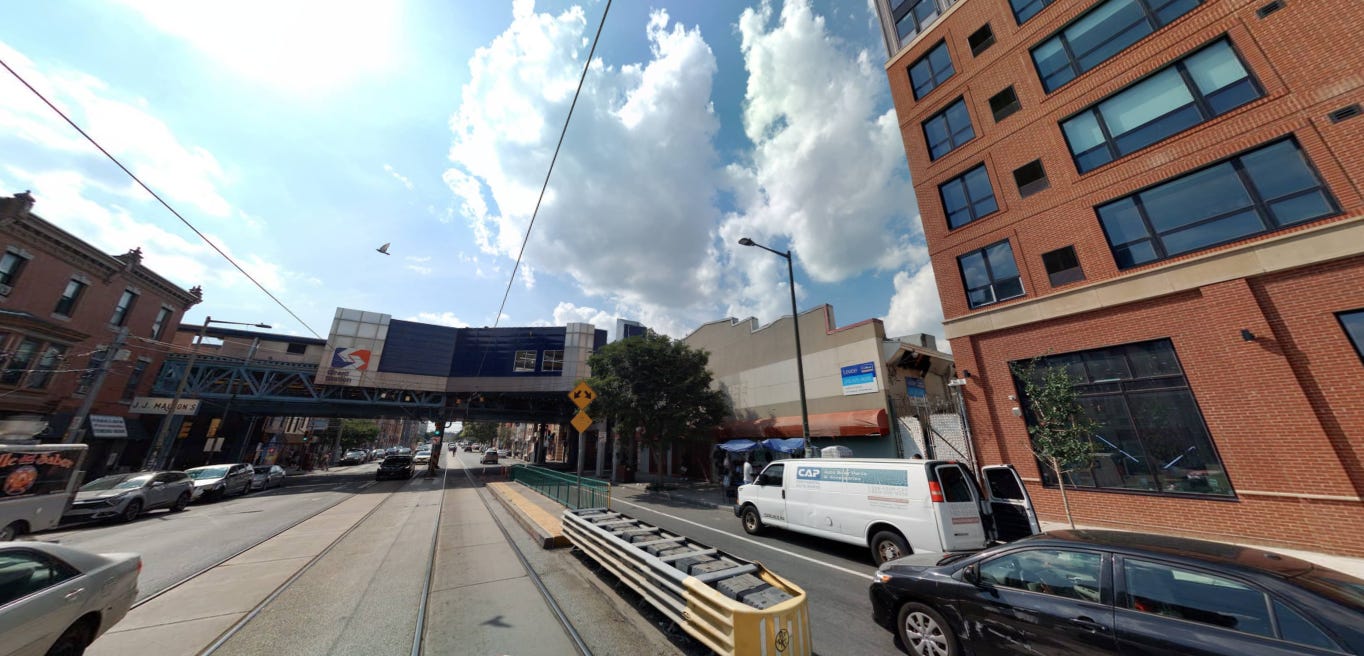Philly’s $2 Billion Question: Why Are We Zoning Single-Family Homes Next to the Subway?
City officials could help SEPTA without spending more money by legalizing additional density near rail stations
It’s great that Philadelphia’s leaders are fighting in Harrisburg for more state funding for SEPTA as the agency struggles to avoid implementing permanent service cuts. But while Philadelphia’s City Council and the Mayor can’t do much more than offer supportive tweets and symbolic resolutions during the state budget battle, they hold a powerful local tool to grow the agency’s ridership and improve the agency’s finances. It would require no approval from Republicans in the state capitol. City Council needs to strengthen the Transit-Oriented Development (TOD) overlay, a special zoning tool that allows for higher density near SEPTA stations. Council did take an important first step earlier this year, eliminating residential parking mandates in the densest downtown areas as part of Mayor Parker’s Housing Opportunities Made Easy (H.O.M.E.) Plan to induce more residential development in the city. But that reform only fixes a fraction of the problem. A problem as complicated as zoning isn’t going to be fixed in one try, but expanding the TOD overlay to unlock housing potential and boost ridership along SEPTA’s high-frequency transit corridors seems like the next obvious reform.
As the former Lead Writer at Naked Philly I covered many redevelopment projects severely limited by the City’s zoning code, despite their proximity to SEPTA stations. Right now the overlay doesn’t help produce that much new development. It applies to only a tiny share of properties in the city, a constrained 500-foot circle around a station entrance, sometimes excluding redevelopment sites only a block away. It covers a limited number of SEPTA stations citywide, leading to redevelopment projects literally across the street from Regional Rail stations requiring scores of new parking spaces or even requiring a bunch of parking in the heart of Fishtown, steps from the El. Even inside that little circle, the code often gives developers only modest, tiny bumps to height or floor area. Even inside the overlay, some projects are still required to build parking! And just a few feet outside that tiny zone, you’ll find thousands of parcels near rapid transit stations the city still has locked into zoning that only allows for single-family houses! We’re reserving some of the most transit-rich, valuable land in the city for the lowest possible density. The limitations of the current TOD Overlay have been identified for a while now, and in fact the City’s own Transit Plan called for enhancing and expanding the overlay all the way back in 2021. This self-sabotage directly undermines the goal of achieving housing abundance in Philadelphia, and facilitating much-needed job growth. What’s the point of all this transit infrastructure if we’re not going to allow folks to work and live nearby?
It is frustrating that Philadelphia trails cities with less developed transit, but this provides valuable case studies of local leadership. Cities like Chicago have locally abolished mandatory parking minimums for new residential and commercial developments within a half-mile of rail and a quarter-mile of high-frequency bus corridors. Similarly, San Diego eliminated minimum parking requirements entirely in its designated Transit Priority Areas to lower housing costs and meet climate goals. Even closer to home, Montgomery County, Maryland eliminated parking requirements within a half-mile radius of Metro/Purple Line stations and a quarter-mile of existing or funded BRT stations. These reforms demonstrate that city leaders can act decisively to unlock transit-oriented housing without waiting for state mandates.
In addition to substantially increasing the zoning relief provisions within the district, Council should expand the district to cover a consistent quarter-mile radius—a five-minute walk—around every rail station and along SEPTA’s high-frequency lines. The last few years have been a stark reminder that we cannot rely on Harrisburg to implement pro-transit policies for Philadelphia, but legalizing more transit-oriented development is something our city can and must do on its own. Plus, it’s a smart economic move; allowing more homes and jobs in these mixed-use zones boosts our tax base. And more ridership will grow SEPTA’s fare revenue, which has become more important than ever when the agency faces an ongoing operating budget deficit.
Over the last few years we’ve seen too many recent examples—especially in historic and wealthy neighborhoods like Society Hill—where Council has actually downzoned areas well served by transit, making it harder to build. This policy is fundamentally inconsistent with the objective of increasing housing supply. Furthermore, the Mixed-Income Zoning Overlay, while aiming for affordability, actually cancels out some of the limited density bonuses in the existing TOD overlay, adding more cost and complexity on top of requiring additional affordable housing units. An expanded TOD, on the other hand, would finally start facilitating the housing we desperately need in the places where it’s most sustainable, affordable, and equitable.
Expanding the TOD overlay is not just smart policy; it’s an urgent civic imperative. By adopting the quarter-mile buffer and zero parking minimums, the City Council can deliver on the H.O.M.E. initiative’s true promise: a more equitable, accessible, and affordable Philadelphia. Let’s stop letting obsolete regulations dictate our destiny. The opportunity to build a thriving city is waiting at the door of every SEPTA stop. It is time for Council to open it.
One of the many transit adjacent redevelopment sites in the city where new construction would trigger a parking minimum


